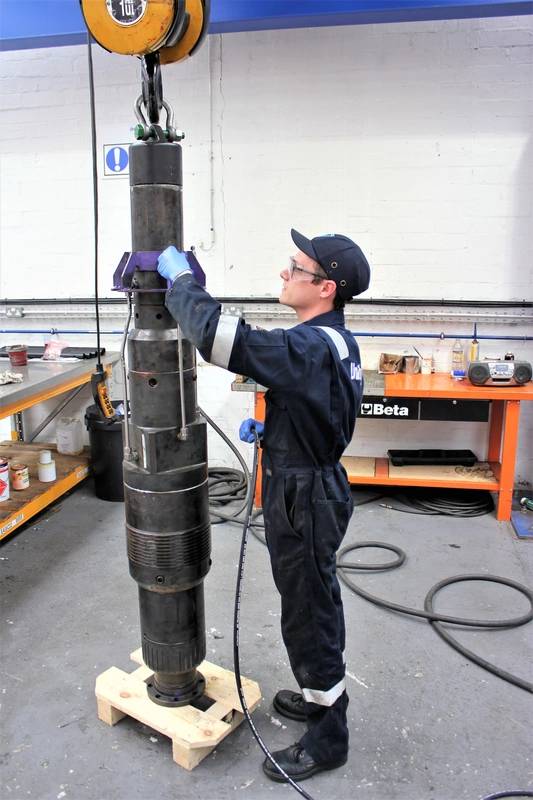
The temporary abandonment or suspension of a well is a vital early stage of decommissioning whereby the well is isolated using methods such as bridge plugs, cement squeezes and packers. This allows the wellhead and/ or blow out preventer (BOP) to be safely removed. For subsea mudline wells, temporary abandonment (TA) caps are fitted to the hanger system, providing additional well and environmental barriers.
With high costs related to permanent subsea abandonment, suspended wells can often be in-situ for more than 10 years. During this time, it is possible for pressure to build up in the well, corrosion to take place and marine build-up to accumulate.
Reentering these suspended wells can be challenging and high risk, particularly as any pressure build up behind the back pressure valve (BPV) of the TA caps cannot usually be measured. Pressures can reach over 4,000psi which creates significant safety concerns, so intervention is normally conducted using a rig with heavyweight well control packages to ensure safety compliances are met. However, this is subject to rig availability and comes with high associated costs – currently around £225,000 ($277,000) per day for deepwater rigs.
Unity, a FrontRow Energy Technology Group company, has developed the Temporary Abandonment Cap Test Tool (TACTT), a new method of pressure testing and venting suspended mudline wells prior to abandonment which contains an integrated well control solution. The technology has returned cost savings for independent operator Spirit Energy for an end of life project in the Southern North Sea.
The TACTT can seal onto any type and size of TA cap, pressure test the seal to ensure well containment, then test and vent pressure from below the TA cap by stabbing the BPV and leaving a reliable secondary seal in place if required. It can be cable deployed from a vessel through open water using a crane and hydraulic umbilical which connects to a control panel at surface. Vessels have greater availability than rigs, can be deployed faster and generally save between 30-50% in costs when compared to rig-based intervention.
The TACTT technology allows operators to understand the amount of pressure accumulation below the TA cap since the last intervention and factor this into their decommissioning plans. If pressure build up continues, and the BPV on the TA cap fails to reseal effectively, the TACTT can leave a secure, secondary seal in place to allow well reentry at a later date.
 (Photo: Unity)
(Photo: Unity)
During the Spirit Energy campaign, the TACTT was deployed from a vessel by crane where it was guided to the mudline well by ROVs and divers, then latched and sealed onto the TA cap. The seal was pressure tested from a surface control unit to ensure effective well containment, before stabbing the BPV of the TA cap and testing the pressure below. This second test verified zero pressure under the TA cap and provided an accurate understanding of the well’s condition, allowing the operator to make an informed decision on the next stage of decommissioning. Once zero pressure and well integrity was confirmed, the operator could safely continue with removal of the cap to proceed with P&A operations.
Developed in response to industry demand, the TACTT is able to accurately and reliably pressure test and vent suspended mudline wells behind the TA cap prior to removal. Economic, safety and environmental benefits are particularly realized when deployed across multiple wells in region-wide vessel campaigns to pressure test, survey and prepare for abandonment.
Olav Log, director of drilling and wells at Spirit Energy said, “Unity’s TACTT allowed Spirit Energy to successfully abandon two North Sea wells in line with UK government regulations. The tool removed all risk associated with re-entering a suspended well and the ability to deploy by vessel provided significant project savings.
“The TACTT technology was originally designed to our specifications and successfully deployed from a rig in the North Sea in 2014. This latest development allowing for vessel deployment opens up further opportunities.”
A recent Oil and Gas Authority report estimates that 45% of all decommissioning expenditure in the UKCS is through P&A of wells. The current cost estimate of decommissioning is £51 billion ($62.8 billion) with the government and industry aiming for an ambitious 35% reduction by 2022.
There is inevitably greater pressure on operators to safely and cost-effectively manage end of life wells in this unavoidable phase of operations.
This provides significant opportunities for the supply chain to evolve and deliver new technologies and methods which tackle and overhaul the key challenges. Research and development investment and adoption of pioneering new technologies is critical.
The author
Matt Manning is Engineering Manager, Unity